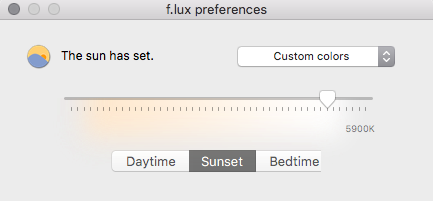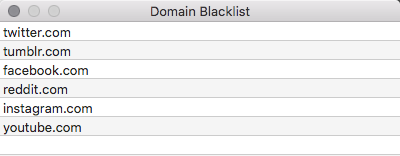Focus: Tips & Tricks for Better Productivity
Focus is one of the most important skills to learn, and yet an undeniably tricky thing to master. With term two revving its engine and preparing to throw us all headfirst back into studying with reading lists longer than your forearm, it is important to get back into the zone. Here’s some (hopefully) helpful tips to help focus your brain and maximise your productivity levels this term.
Separate work from home (or at least from your bed)
It’s unbelievably tempting to do all our work from the comfort of our beds – especially on rainy winter days. Not only is spending all day curled up around a laptop awful for your posture, but it can affect your sleep. You can “break that bond between sleep and the bedroom" and even heighten the possibility of insomnia. [1]
It’s best to try and use the library and on-campus study spaces wherever possible, keeping work in one place and separating essays and relaxation. Sometimes the library might not feel right, or convenient, so if your student house has a desk or even a shared table space, use it. Keep your bed for sleep (and maybe the occasional Netflix binge?)
The blue light emitted from screens can also suppress levels of the sleep hormone melatonin in your body. Apple have a Night Shift mode (both on iPhones and Macs) which filters this into a more gentle, orange tone which is better suited to late-night work if and when it must be done (even the most focused of us all can’t deny that they’ve stayed up far too late to get some last minute work finished). There are also installable alternative options such as f.lux (Windows, Mac) and Twilight (Android), which are more customisable in terms of the colours used and can be set to automatically activate at a certain point in the evening.
Get. Off. Social. Media.
Social media seems to be one of the top distractions, shortening our attention span to 280-character tweets and Instagram captions. When we should be focusing on Ulysses or Paradise Lost, only tolerating a paragraph at a time before trailing off back to Instagram becomes a real issue, so it’s crucial to restrict time on social media as much as possible.
A great deal of information and resources are online, which makes it all too easy to open up Twitter in a new tab and procrastinate your reading. Find an application like SelfControl (Mac), StayFocusd (Chrome extension) or Cold Turkey (Windows and Mac) for your laptop or desktop – these programs block sites of your choosing for a set amount of time, so you can read academic articles until your brain is sore without being able to flick onto Facebook (or the Asos sale).
If your phone is the issue, there are similar apps available – things like Forest (available for both iPhone and Android) encourage you to leave your phone for a set amount of time, and if you leave the app the tiny pixelated tree you’ve been growing for the past twenty minutes will die. You should also set up Do Not Disturb so that any notifications you receive will be silenced, reducing the urge to pick up the device.
The right music makes all the difference
Some find it best to work in total silence, but silence is hard to come by at University. Having the right playlist to get you into the right headspace to focus on your reading or writing is absolutely essential. Instrumental tracks are usually a good place to start, with no lyrics to distract you – it might seem like a nice idea to listen to Hamilton to keep your spirits up but resisting the urge to sing aloud whilst trying to quietly read a critical essay in a packed library is a recipe for disaster.
Save musical theatre for your time off and instead explore the world of study music on Falwriting’s Spotify page. We’ve curated three separate playlists: electronic, classical, and an acoustic selection for the more chilled out reading sessions. Each is 3 to 4 hours long, so there’s plenty of tracks to keep your flow going without having to scroll Spotify to find your next picks.
Example: some of Falwriting's own Spotify playlists, curated specifically to help you focus on those tricky readings.
Figure out what works best for you
This final one seems obvious, but it’s possibly the most important of the bunch. What works for a friend might not work for you, and as nice as it is to have a study partner it’s important not to let yourself get distracted. Spend a little time working out your own rhythms and what fits best to utilise your time in a productive, but manageable, way. The Pomodoro method could be worth checking out: working in 20-25 minute intervals, before taking a short break and continuing. (There's an app for this one, too). Of course, we can't forget the StudyHub and ASK sessions run by the university for anyone who needs an extra hand in figuring out their study habits.
Don’t overload yourself with complicated planners or study schedules that allow for no free time – it’s just as vital to take the time to breathe, relax and socialise before you burn out. Whether solo study, a small group, in the library or on the kitchen table, follow what makes you the most productive and maximises your time in the best possible way.
By Maisie Prudames
[1] Russell Rosenberg quoted by Sue Shellenbarger 'Taking the Office to Bed/More Work Goes 'Undercover'', Wall Street Journal, 14/11/12
https://www.wsj.com/articles/SB10001424127887323551004578116922977737046



